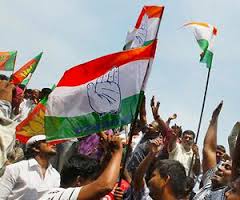
According to Election Department officials, Congress candidates have either won or were leading in 20 seats while the opposition Mizo National Front (MNF) won one seat and was leading on two other seats. The MNF i8s heading the three-party Mizoram Democratic Alliance (MDA) in the electoral battle this time.
"Under tight security blanket, counting of ballots has been underway in eight district headquarters simultaneously since 8 a.m. Final results are likely to be out by late afternoon or by evening," said Mizoram Joint Chief Electoral Officer H. Lalengmawia.
Chief Minister Lal Thanhawla, who also heads the state Congress and is contesting from two constituencies, won from Serchhip constituency, defeating his nearest MNF rival C. Lalramzauva by a margin of 734 votes and in the second Hrangturzo constituency he is leading over his MNF opponents.
"In the South Tuipui seat, sitting Congress legislator John Siamkunga retains the seat, defeating opposition ZNP (Zoram Nationalist Party) nominee J. Lalchhuana by a margin of 1,568 votes," an official told reporters.
Senior Congress leader S. Laldingliana retained his Lunglei South seat, defeating his nearest MNF candidate K. Pachhunga by a margin of only 450 votes. Several Congress candidates are leading in their constituencies over their opposition nominees.
Monday's results after counting of the ballots would decide the political fate of 142 candidates, including six women.
Over 81 percent of the total of 690,860 voters exercised their franchise across the state Nov 25 to elect a new 40-member assembly and government.
The main poll battle is between the ruling Congress, which has fielded candidates in all 40 constituencies, and opposition Mizo Democratic Alliance of the Mizo National Front (MNF), Mizoram People's Conference (MPC) and the Maraland Democratic Front (MDF), all regional and local parties.
The MDA's constituents MNF, MPC and MDF have fielded candidates for 31, eight and one seat respectively.
With little base in the Christian dominated northeastern state, Bharatiya Janata Party has put up 17 candidates, Zoram Nationalist has Party nominated 38 candidates, and the Nationalist Congress Party has two aspirants.
Of the 40 assembly seats, 39 are reserved for tribals. One seat is for the general category.
Reang tribal refugees, sheltered in seven camps in Tripura for the past 16 years, have cast their votes in Tripura through postal ballots for the Mizoram assembly polls.
During the last assembly elections in December 2008, the Congress won 32 seats, the MNF three and the MDF one. The MPC and ZNP got two seats each.
The MNF, which ruled the state for 10 years till 2008, is the principal opposition party.
With a total population of 1,091,014, Mizoram is the only state in India where women voters outnumbered men by 9,806 in the total electorate of 690,860.






Comments
Add new comment